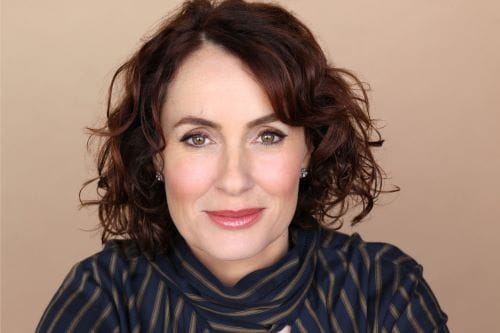Have you ever wondered why we sometimes feel overcome with emotions? It may be a story we hear about on the news, something we read, the image of a character we have invested in on tv or a movie, or the lyrics of a song. Our feelings can often be overwhelming. No doubt at some point during the pandemic you may have experienced strong emotions, as we all worked to comprehend something which we had never gone through before, and we yearned for life to return to normal.
Susan David, PhD, has dedicated her life to studying emotions. Originally from South Africa, she is a psychologist on the faculty of Harvard Medical School, and she currently lives in Boston with her family. She is the author of Emotional Agility: Get Unstuck, Embrace Change, and Thrive in Work and Life (2016).
For a TEDWomen talk delivered in New Orleans in 2017, Susan David focused on The Gift and Power of Emotional Courage. She began the talk by welcoming her audience with the Zulu greeting Sawubona, meaning hello. Literally translated, however, it means “I see you… and by seeing you, I bring you into being.” This is a beautiful expression and a perfect way of introducing the work of Susan David who aims to help others live with more intention.
As a keynote speaker for The Montessori Event 2023 to be held in Boston, MA, March 16 – 19, Susan David hopes to inspire in us the theme of this year’s event: “Reunited & Reignited” by helping us to “see” ourselves in a new way.
In mid-December, I was privileged to participate in a conversation with Dr. Susan David. This article will provide brief excerpts of the Q & A which took place. Please note that the conversation was edited to weave in some highlights of her published work and for flow.
What is Emotional Agility?
In her book, Susan David introduces the concept of Emotional Agility by explaining that “being flexible with your thoughts and feelings… you can respond optimally to everyday situations.” She goes on to share that it is not a matter of controlling your feelings or forcing yourself to think positively, but rather the key to well-being and success is more about “loosening up, calming down, and living with more intention.”
Lilia C. DiBello: You explain in your book that one of the cornerstones of emotional agility is embracing “the beginner’s mind,” in order to approach novel experiences with fresh eyes. This assertion might remind some people of Maria Montessori’s work where she expresses “[The Absorbent Mind] which receives all, does not judge, does not refuse, does not react. It absorbs everything and incarnates it in the coming man.” Maria Montessori studied children carefully and she analyzed the importance of significant periods in a child’s life—which would then establish patterns for later life. When you encourage us to embrace “the beginner’s mind” in order to be more emotionally agile—how do you envision this happening in a classroom setting?
Dr. Susan David: The way the mind often works is that it employs a mechanism of self-protection. So often as children grow up and engage in exploration and curiosity, it is enculturated for them to think “am I part of this” or “not part of this” or “is it working or not?”
This reminds me of a story I heard once about Benjamin Zander, the conductor of the Boston Philharmonic Orchestra. He would describe that, at times, his very talented music students would make a mistake and they would come down very hard on themselves. That’s the “judgment mind” talking—“right vs wrong.” But, Zander described a phrase that he often used in his teaching—“how fascinating.”
The beginner’s mind or a curious mind is really about this idea of “how fascinating.” The core idea is that so much of what happens in the classroom relies on the personal interactions and relationships that are built. There’s something about the beginner’s mind, the mechanism involves intentionally bringing this sense of “how fascinating,” and we can call it a curious and interesting experimentation to the way we are “languaging” with children.
There’s another aspect children are learning about themselves; they’re not just learning about the world outside of them, but they are also learning about their emotions and their values. As children learn about their reactions to the world, teachers play an important role in helping students develop a curiosity. For example, if a child feels sad because they are being excluded, what would you say to them? An educator may be tempted to jump in too quickly in order to make the child feel better in navigating their feelings of rejection. It’s just as, if not even more important, for educators to apply the beginner’s mind to help the child deal with and be curious about the full range of their own emotional experiences. That becomes a core part of their wellbeing and resilience through life.
Sometimes a more interesting approach can actually be firstly showing up and employing that idea of sawubona and that being with a child in their discomfort helps a child to feel seen. Allowing a child to feel that there is space for their emotion and that there is no wrong or right emotion. There is no emotion that is allowed or not allowed. So, that’s a beginner’s mind when it comes to emotional experience.
When children are feeling challenged emotionally, we can prematurely try to solve things for them and help them to move on. However, something extraordinary happens when we experience those difficult emotions. These difficult emotions are often signposts of things that are important to the child. For example, feelings of rejection, can signpost that the child cares about friendship, and this can give rise to a beautiful conversation about what friendship looks like, what real friends are, and how you want to come to your friendships. In this way, emotions are not to be gotten over, but rather a core part of a child coming to understand themselves, what matters to them, and how to move forward with that knowledge. In that way, through emotions, we facilitate in the child a sense of their values and how they want to approach the world: their character. It’s really crucial in a changing world to help our children identify who they are and what they stand for and what’s important to them. It’s probably one of the greatest gifts we can give our children.
Why is Emotional Agility Important?
When focused on being more effective with your thoughts and emotions, your intentions and your insight will impact your choices. Educators and parents play an important role in establishing a strong foundation for emotional agility. “The skills of emotional agility allow you to recognize what you’re feeling, understand what it is, not be driven by it, be more intentional, and, ultimately, close the gap between the things you’re trying to do and the outcomes.”
Four Essential Movements to Gain Emotional Agility
Susan David shares that the process of gaining emotional agility involves engaging in actions which allow you to “unhook” yourself from emotional rigidity (thoughts, feelings, and behavior that don’t serve us).
- Showing Up: Instead of ignoring difficult emotions or overemphasizing “positive thinking,” learn to face thoughts, emotions, and behaviors willingly, with curiosity and kindness.
- Stepping Out: Create distance between the thinker and the thought and recognize that emotions are data, not directives. Step out of the struggle against your emotions and into the empowering experience of processing them.
- Walking Your Why: Identify your own personal set of values and use them as a compass to keep you moving in the right direction.
- Moving On: Appoint yourself the agent of your own life and approach your daily actions, interactions, and habits mindfully so that you can bring your best self into the world.
Lilia: In the book, when you tell readers about these four “essential movements” to gain emotional agility, I appreciated your choice of words—because in using “movement”—it highlighted that there is a required action. In other words, Olympic athletes could never have made it to the biggest stage to compete without intense practice. In fact, there is so much practice that there is muscle memory involved. Can you expand on the idea of emotional agility movements?
Susan: Ultimately, what we’re trying to cultivate is values-aligned action in our lives. Let’s take self-confidence as an example. We can’t think our way to self-confidence. We need to move our way to self-confidence.
For children who may be feeling a little bit less confident, we want them to get out of their heads and into their lives. Doing is ultimately the best way to develop confidence. A child who takes on challenges, explores, and little by little moves to learning things that seem tough, will develop that confidence. It’s important for educators to help children develop the pathway by doing the thing that’s difficult.
Another example of a “movement” orientation is found in social situations. Often when a child is struggling to make friends, the child will say “Jack doesn’t like me” or “I don’t like Jack”—that child is in “judgment mind” which often brings with it a lack of agency. Similar in concept to Carol Dweck’s work (when she discusses growth mindset vs fixed mindset), we can help the child to move away from an all or nothing judgment mindset and to instead adopt a growth orientation.
With friendships, it can help to suggest that, yes, sometimes we have “fast friends” but we also have “slow friends.” Fast friends are friends that you immediately connect with on the first day of Montessori school and then are inseparable from day one… it’s easy! But more often than not, we have “slow friends.” Slow friends are your undiscovered friends. They are all around you. Slow friends are friendships that develop over time. It’s a process of discovery. We see what we have in common with them, we learn from them, and then they become friends over time. Providing that kind of language becomes really important because it helps the child to move away from dichotomous, all or nothing thinking, into a mindset that stays curious, agentic, and growth-oriented with others.
Lilia: In your book, when thinking about children specifically under the age of 13, you mentioned the Disney movie Inside Out as a clever way of helping children call out emotions. Do you have any specific pieces of children’s literature you can recommend that would put to work our need to practice the four “essential movements?”
Susan: There are many good book recommendations.
When it comes to books, the one that immediately comes to mind is We’re Going on a Bear Hunt, written by Michael Rosen and illustrated by Helen Oxenbury in 1989.
The opinions expressed in Montessori Life are those of the authors and do not necessarily represent the position of AMS.


